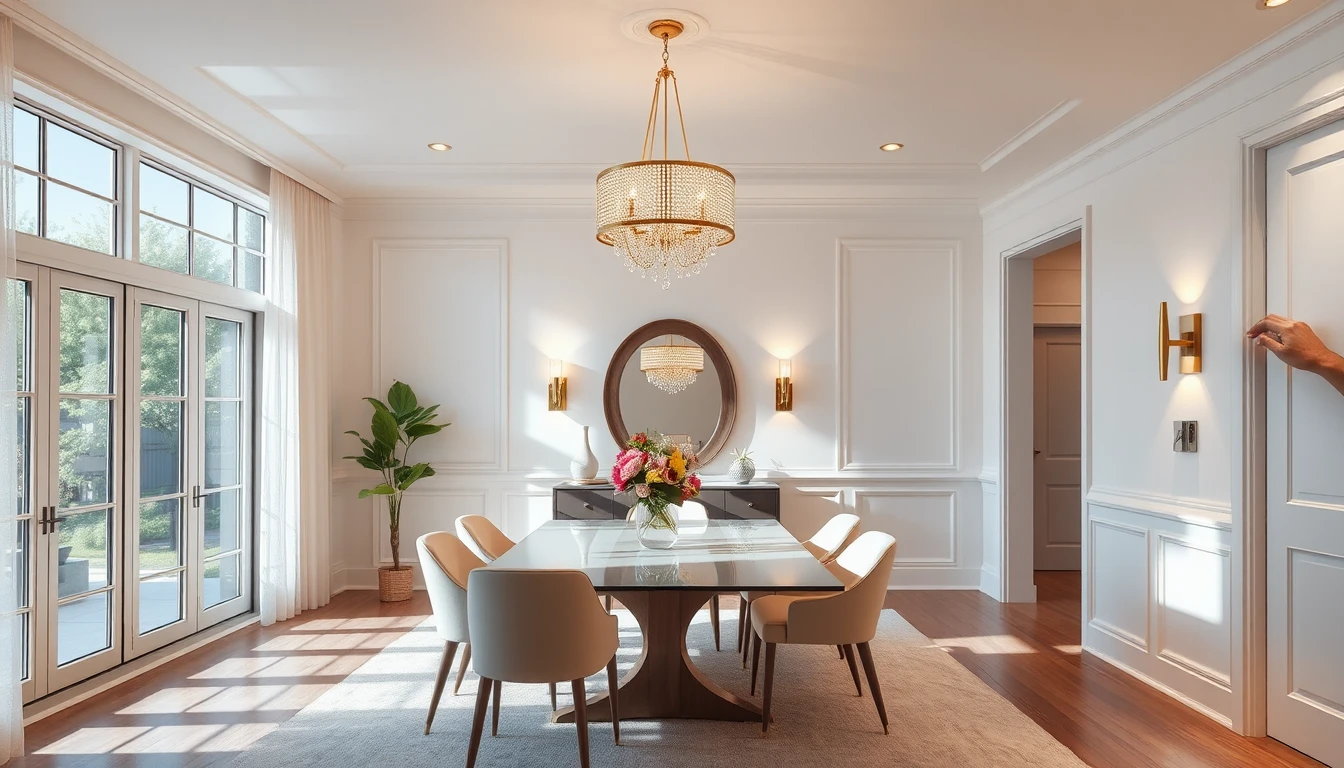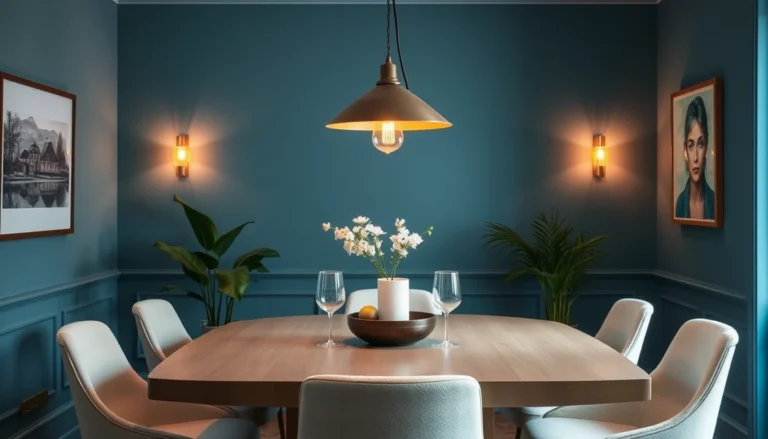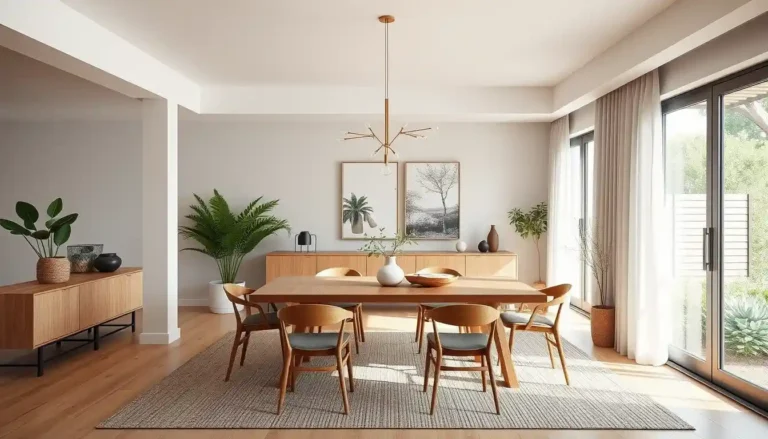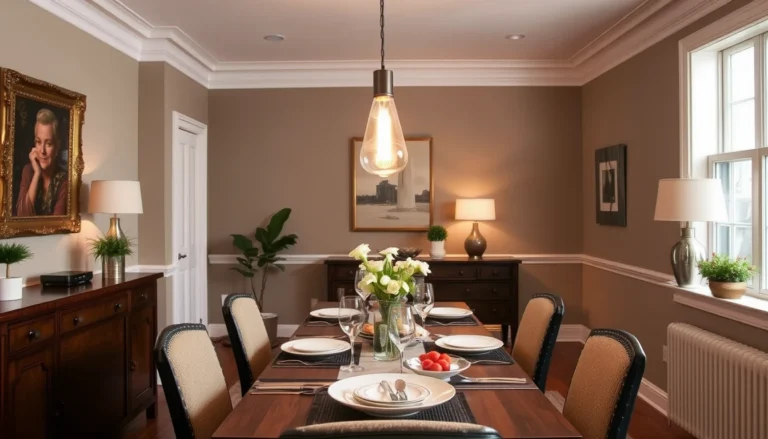6 Ideas for Achieving Bright Dining Room Lighting Are Mentioned—Here’s What Actually Works
Dining rooms frequently miss out on receiving the proper lighting attention they need.
Our fixation extends to kitchen lights and bedroom mood lighting while we also scrutinize those elegant bathroom sconces.
But the dining room? Home lighting’s middle child status means it gets ignored while bizarrely being expected to unify everything.
Should your dining room resemble a shadowy interrogation chamber instead of a welcoming taco and wine haven (or whatever your personal vibe may be), this message is directed at you.
My history includes numerous lighting failures. There was a time when I believed that one pendant light embodied minimalist chic.
My salad found itself under a sorrowful spotlight. The instructional experience reached its conclusion.
Achieving bright, functional, and stylish dining room lighting is entirely feasible by combining multiple ideas that work in harmony instead of relying on a single inadequate bulb.
Are you prepared to transform your dining room into a gleaming spectacle of light?
1. Layer That Lighting Like a Pro
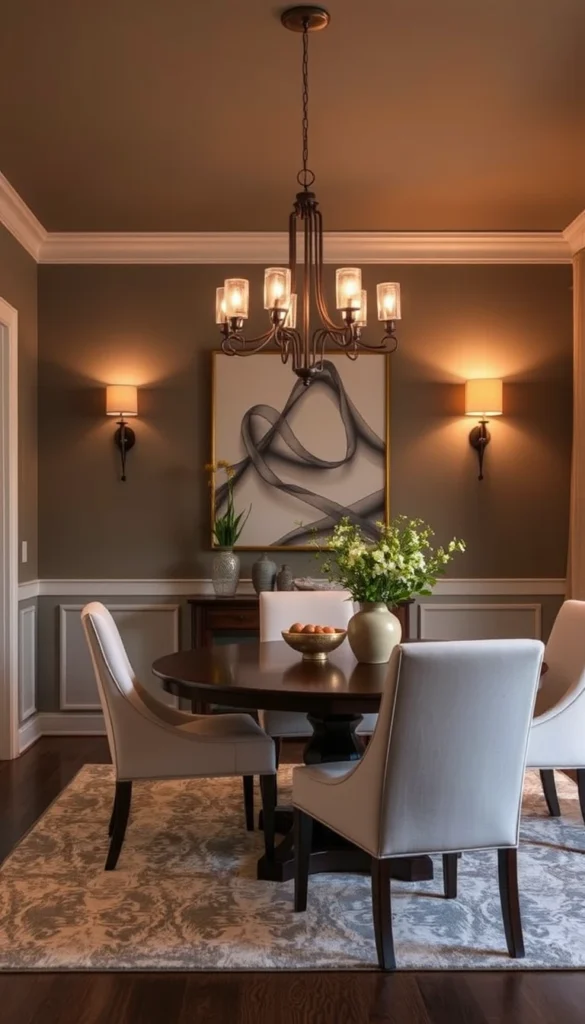
Ever tried to rely on one overhead light for everything? Yeah, don’t. That’s like trying to season a whole meal with just salt. It works, technically, but it’s not doing you any favors.
Mix It Up:
- Ambient lighting: This is your general lighting—usually from a chandelier or flush mount. It sets the stage.
- Accent lighting: Think wall sconces, candles, or picture lights. These add depth and vibe.
- Task lighting: Not just for reading, folks. If your dining room pulls double duty as a workspace (been there), this helps.
The trick? Combine all three. That’s how you go from “eh” to “whoa, did you redecorate?”—without actually redecorating.
2. Choose a Statement Chandelier

We all love a good chandelier moment. But FYI, not all chandeliers are created equal. Some are gorgeous but barely give off light—AKA decorative drama queens. Others scream “boardroom” instead of “let’s eat pasta and laugh for two hours.”
What to Look For:
- Brightness: Aim for at least 3,000 lumens in the dining room, depending on size.
- Size matters: A general rule? Add the room’s length and width in feet. That number in inches is the ideal diameter of your chandelier.
- Style: Modern, rustic, industrial, or Boho pick what fits your space, but make sure it’s not all looks and no function.
Personal tip? I swapped a dim chandelier for one with LED filament bulbs. Chef’s kiss. It’s bright, warm, and actually lights the food so it doesn’t look like you’re dining in a cave.
3. Wall Sconces = The Underrated MVP
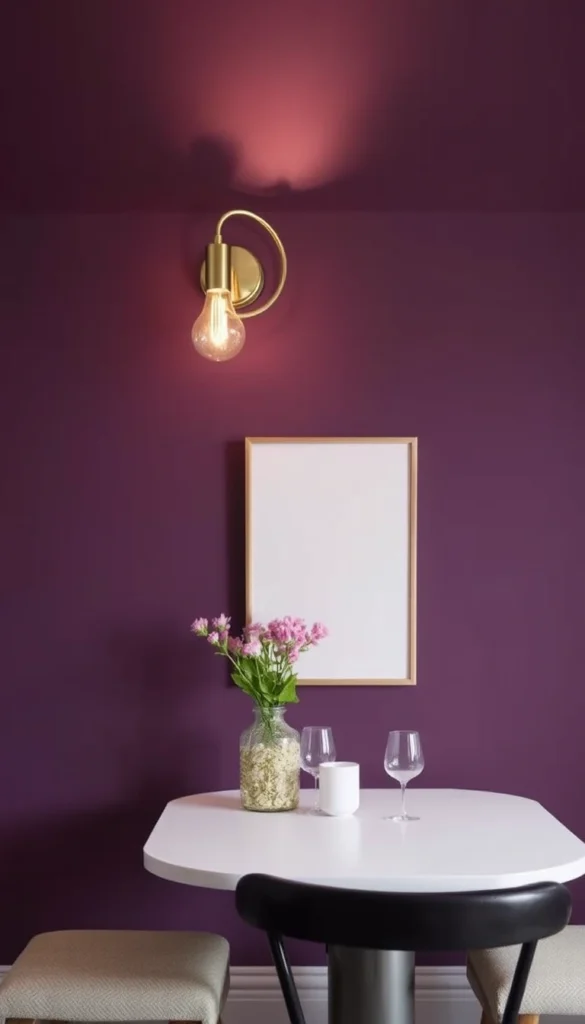
Wall sconces don’t always get top billing, but they’re sneaky good at lifting a space. They add light and that “oh wow, this feels fancy” energy—without needing to rewire the whole room.
Why I’m a Fan:
- They free up space (no table clutter).
- They add vertical lighting, which helps prevent that annoying overhead-shadow face situation.
- You can hardwire them or go plug-in—less scary if you hate dealing with electric stuff (same).
Quick PSA: Avoid placing them too high. You want the light to fall at or slightly above eye level. Unless you enjoy staring directly into bulbs while you eat. In which case… yikes.
4. Don’t Ignore Natural Light
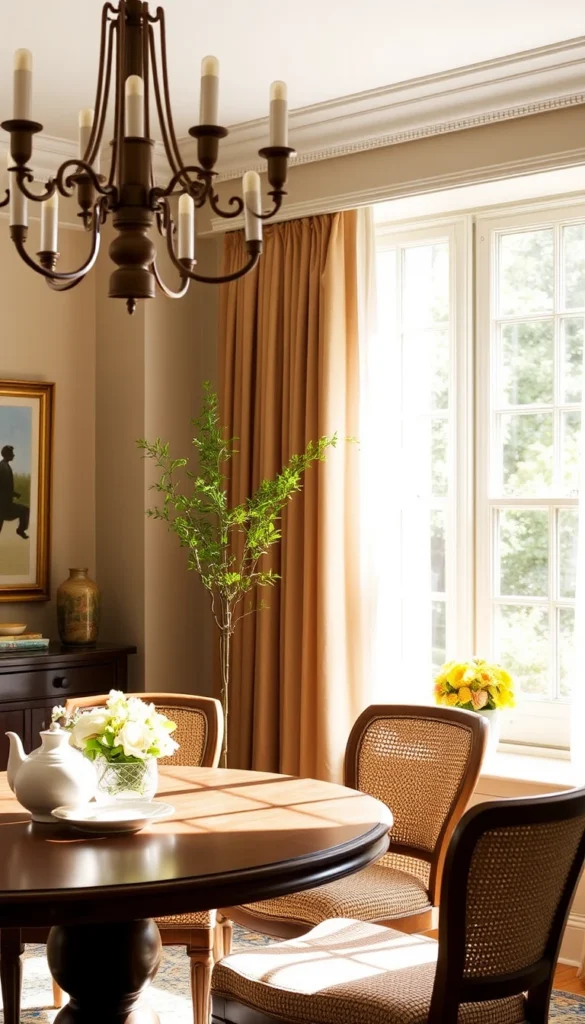
This one seems obvious, but you’d be shocked how many people block their best light source with heavy drapes or oversized furniture.
Here’s what helps:
- Swap dark curtains for sheer ones that let sunlight flood in during the day.
- Use mirrors to bounce light around—especially if your dining room doesn’t have a lot of windows.
- Keep window areas clear and uncluttered. That massive sideboard blocking half your window? Yeah, it’s not helping.
IMO, nothing beats a sun-drenched breakfast in a bright dining room. And best part? Natural light is free. Which is more than I can say about my electricity bill .
5. Use the Right Bulbs (It’s Not Just “Warm or Cool”)
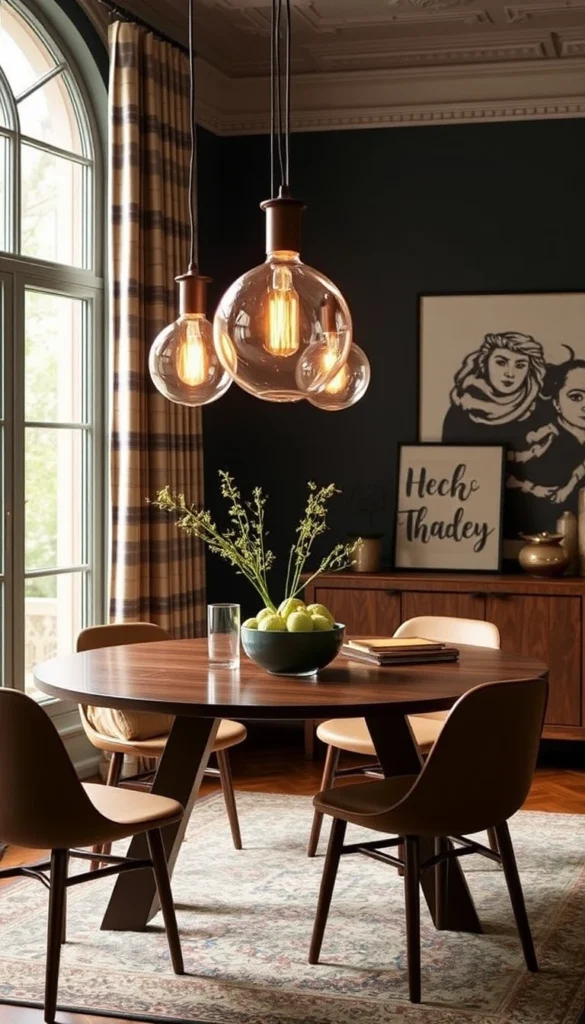
Let’s geek out for a sec. Your light bulbs have a huge impact on how your dining room feels. And no, it’s not just about wattage or “warm vs cool.”
Here’s what to actually pay attention to:
- Kelvin Temperature (K):
- 2700K = warm, cozy vibes (great for ambiance).
- 3000–4000K = bright but not too harsh (ideal for dining).
- 5000K+ = daylight-level intensity (aka, dentist-office bright—pass).
- Lumens: More lumens = more brightness. You want at least 3,000–4,000 lumens total in the room if you like it bright.
- CRI (Color Rendering Index): Look for a CRI of 90 or above to make food and colors look true to life. Nobody wants their dinner to look like a grey blob under bad lighting.
And yeah, LEDs win this round. They last longer, run cooler, and let you choose exact brightness and tone.
I switched all my dining bulbs to dimmable LEDs, and now I can vibe from brunch to dinner party without needing to swap lamps.
6. Add a Dimmer Switch (Game Changer)

If your dining room still has an on/off switch, it’s time for a glow-up. A dimmer switch gives you total control over brightness, so you can go from “weekday lunch” to “romantic dinner” in two seconds flat.
Why You’ll Love It:
- Sets the mood instantly.
- Saves energy (and your electric bill).
- Makes any light fixture more versatile.
I know it sounds basic, but once you use a dimmer, you won’t go back. Promise. Plus, you can DIY install one in like 15 minutes.
Unless you’re me and had to call a friend because I turned off the wrong breaker. But hey, that’s what group chats are for, right?
Bonus Tip: Table Lamps in the Dining Room? .
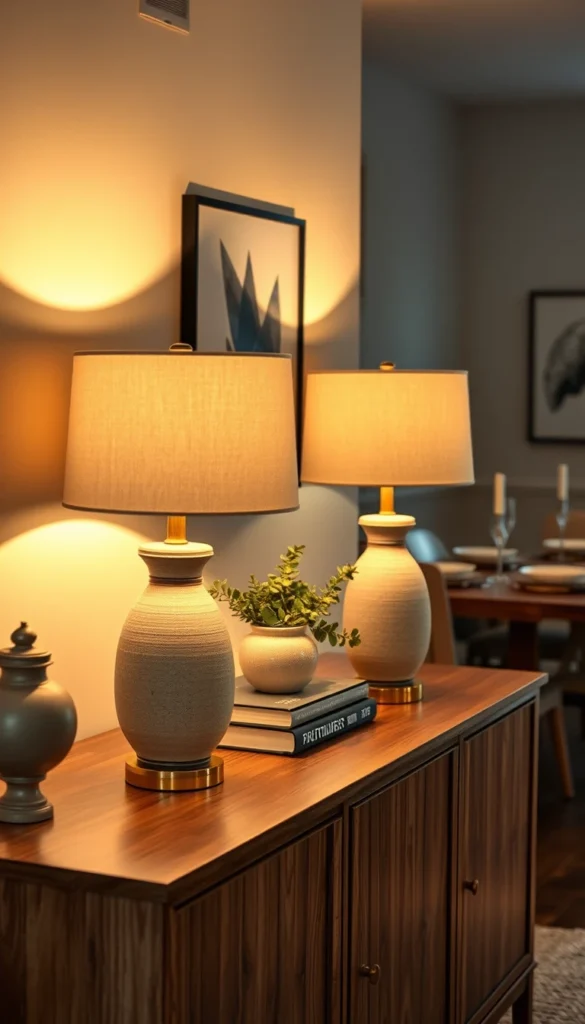
I know it sounds weird, but hear me out. If you’ve got a buffet, console, or sideboard, placing a pair of matching table lamps adds major cozy energy and another layer of lighting.
Think of it as dining room mood lighting with personality. Plus, lamps are easier to switch out than wall fixtures or ceiling lights if you’re indecisive like me.
Final Thoughts: Bright Doesn’t Mean Blinding
So, to wrap it up—bright dining room lighting isn’t about blasting the room with stadium-level wattage. It’s about layering, choosing the right bulbs, and making it feel intentional. And fun. Let’s not forget that part.
Here’s a quick recap of what actually works:
- Layer your lighting—ambient, task, and accent.
- Pick a statement chandelier that actually lights the room.
- Add wall sconces for flair and functional glow.
- Maximize natural light and don’t block your windows.
- Choose LED bulbs with the right color temperature and lumens.
- Install a dimmer switch to control the vibe.
Do a combo of these and boom—your dining room goes from meh to marvelous.
Now go ahead and actually enjoy that space—whether it’s for dinner parties, late-night snacks, or pretending to do work at the table.
And if you catch yourself admiring your new lighting setup a little too often… yeah, same.
